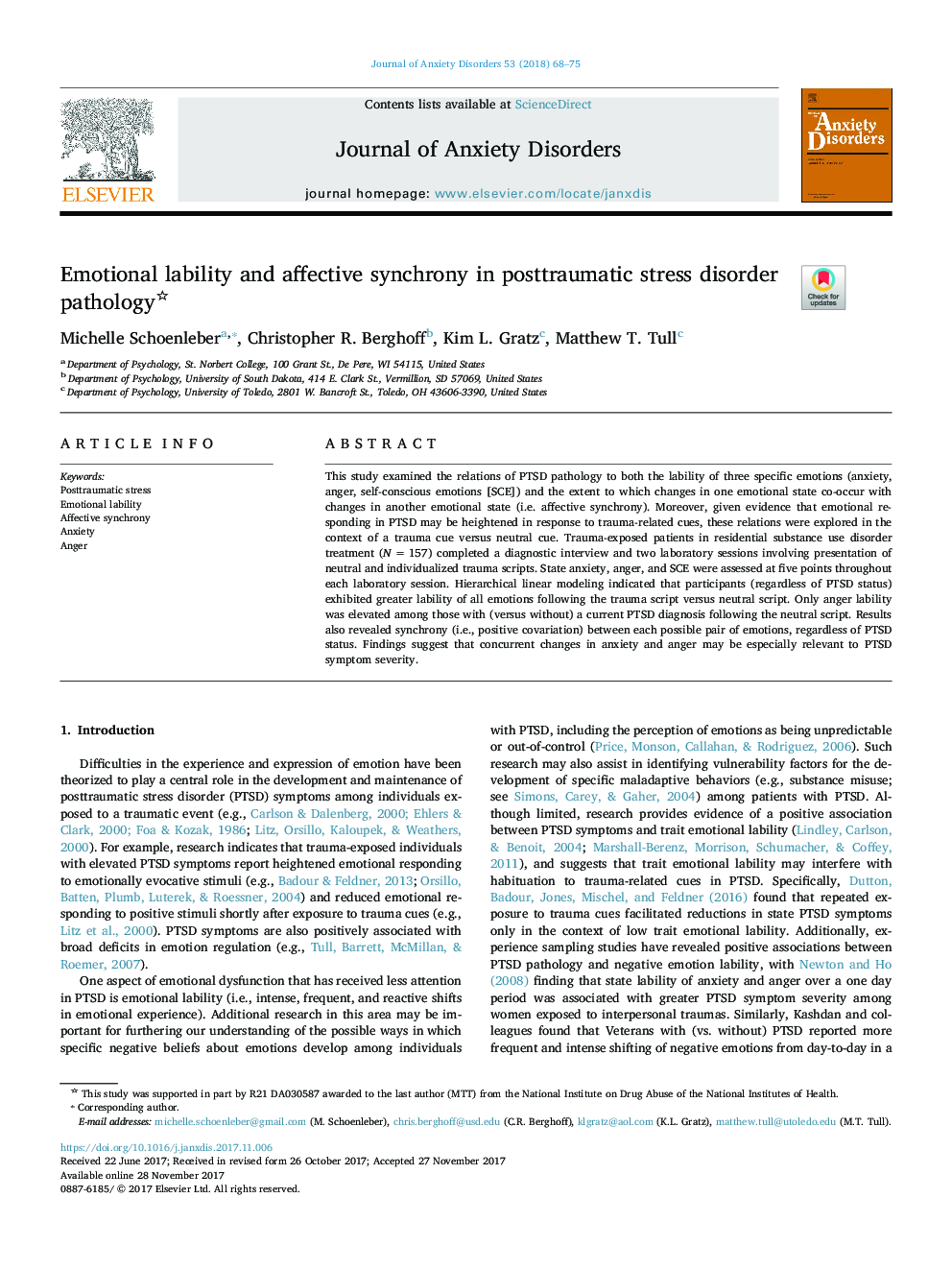| Article ID | Journal | Published Year | Pages | File Type |
|---|---|---|---|---|
| 7267018 | Journal of Anxiety Disorders | 2018 | 8 Pages |
Abstract
This study examined the relations of PTSD pathology to both the lability of three specific emotions (anxiety, anger, self-conscious emotions [SCE]) and the extent to which changes in one emotional state co-occur with changes in another emotional state (i.e. affective synchrony). Moreover, given evidence that emotional responding in PTSD may be heightened in response to trauma-related cues, these relations were explored in the context of a trauma cue versus neutral cue. Trauma-exposed patients in residential substance use disorder treatment (NÂ =Â 157) completed a diagnostic interview and two laboratory sessions involving presentation of neutral and individualized trauma scripts. State anxiety, anger, and SCE were assessed at five points throughout each laboratory session. Hierarchical linear modeling indicated that participants (regardless of PTSD status) exhibited greater lability of all emotions following the trauma script versus neutral script. Only anger lability was elevated among those with (versus without) a current PTSD diagnosis following the neutral script. Results also revealed synchrony (i.e., positive covariation) between each possible pair of emotions, regardless of PTSD status. Findings suggest that concurrent changes in anxiety and anger may be especially relevant to PTSD symptom severity.
Related Topics
Health Sciences
Medicine and Dentistry
Psychiatry and Mental Health
Authors
Michelle Schoenleber, Christopher R. Berghoff, Kim L. Gratz, Matthew T. Tull,
